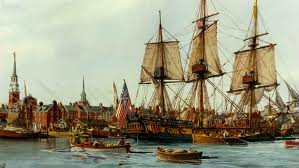The assignment was to construct a sailboat that is no larger than a half sheet of paper, can hold 20 marbles , and can travel one meter without sinking or touching the sides of the stream table. A hairdryer was used to imitate the wind. Grades are to be based on whose boat met all of these requirements with the fastest average time.
I started by building a base out of foil. The foil initially seemed to be an excellent choice because it was easy to mold, lightweight, and could hold all of the marbles without sinking.
Then, I attempted to make a sail out of pencils and plastic wrap by placing the plastic wrap between the two pencils and attaching it with tape. However, I found that whenever I tried to attach the sail to the boat, it was too flimsy. Even after I tried to reinforce it with layers upon layers of tape, it was not sturdy enough. I tried to put a layer of styrofoam in the center of the boat to hold the sail in place, but it was not thick enough to support the pencils. Since my original design had failed, I had to completely redesign my boat at home.
Once I got home, I did some research and received some suggestions from my parents. I cut out a piece of styrofoam and had the front pointed in order to guide the direction of the boat. I found a small cardboard box to hold the marbles and wrapped it in foil to make it waterproof.
I used the end of a plastic gift bag and two popsicle sticks to construct the sail. Duct tape was used to hold the box to the boat and to attach the popsicle sticks to the sides of the boat. After completing the boat, I tested it in my bathtub, using a large rock to mimic the mass of the marbles, and discovered that the base of the boat was not large enough to support the mass.
I made the base of the boat as large as I could (while falling in line with the size requirement) and tested it again. Though I still had to test it with the marbles in the classroom's stream table, my final product seemed to be a success.








































